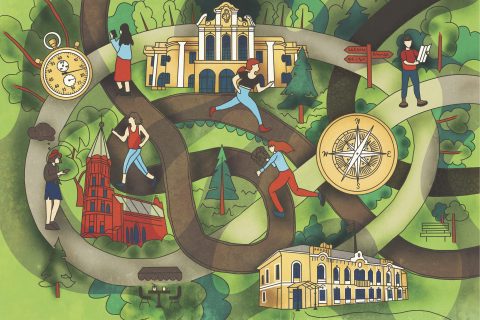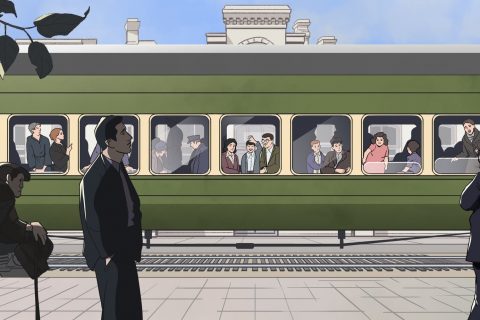I keep noticing the gamification term more and more often. One of the main reasons behind it is that we live in a society that requires for our every step to be based on innovation and interactivity. Even for everyday tasks, we use the features of digital games that we apply in a non-gaming context. Yes, intriguing, but what does that say about each of us? Is it possible that we are growing childish? “It all depends on the tools we use,” Dovilė Valantiejienė, a fourth-year doctoral student at the Faculty of Economics and Business at Kaunas University of Technology, says. She is currently researching team motivation with applied gamification.
Dovilė, how would you define gamification?
It is the adaptation of game-specific solutions to concrete real-life or business goals. I would venture to say that this is a goal-oriented activity that, according to research, meets some human needs. For example, those of autonomy, competence and connectivity.
What fascinates you about this modern tool?
First of all, the wide range of applications and the fact that the possibilities of gamification design are endless. They are constantly evolving with the advancement of technology and are dependent on the possibilities of human creativity. It is true that we often consider gamification to be a new and modern tool, but this principle has been around for a long time. The historical origins of gamification practices go back to the early twentieth century and, according to some people, to even older times.
The second reason is the dependence of the created effect on the context of the application. This means that the correct application of gamification poses many challenges. There is no one recipe or one way. We need to have a clear understanding of who the player or audience is, what we are aiming for, what rules we are following, what emotions we are evoking or what we are aiming for. It is also important to understand whether the idea of gamification is important and related to the person involved in the activity. All of that is quite confusing but the results are astonishing.
Why do you think there has been a rather dramatic change lately? It can be noticed that people started requiring more interactivity in their daily activities.
We live surrounded by a huge and constantly evolving flow of information. It often even seems like things are going a little too fast. It has become difficult to focus but we still don’t lose hope that we will achieve our goals quickly. As a result, we are looking for new, exciting and innovative solutions to make tasks easier and their implementation smoother and more fun. We want something non-traditional and that is where gamification comes in.
It allows routine tasks to be turned into engaging activities that create a sense of fun and accomplishment and thus encourage people to participate. I would venture to say that this is the main reason why people appreciate the interactivity brought by gamification.
In your opinion, what does this say about society? Could it be said that we are growing childish?
Applying gamification to achieve your goals is a certain form of support. Like a tool that can be used properly or incorrectly. As I said, when we think of gamification, we have to set a specific goal. If the goals are not childish, but just as important and meaningful to society, then a well-designed gamification can be a great way to promote socially responsible activities or actions that benefit not only work results but also one’s own health or well-being. And, of course, the opposite can be true. If our goal is unethical or we do not understand what we are aiming for, then by acting recklessly, we can have a negative impact on those around us.

I have read that such interactive activities are most often used on a daily basis by teachers or human resources specialists. Do you think gamification could be adapted to improve the cultural sector?
The application of gamification is very wide. Yes, this tool often helps education and human resource management. However, this approach is also being used successfully in marketing, services, logistics, finance and many other areas.
I do think it could be improved through gamification. Especially now when so many research and practices show how gamification can be successfully applied in the context of a wide range of services.
Could this be effective in expanding your audience, not just trying to involve employees more actively?
Research shows that gamification increases engagement, the willingness to participate, and articles suggest that in marketing and services, this creates value for the consumer. In my view, these are quite strong arguments that propose that it can yield excellent results in the cultural sector too.
Don’t you think that simplifying or explaining a work through gamification can diminish the value of art itself?
When it comes to the risk of overdoing it, it’s probably important to go back to the idea of targeted gamification. It is important to understand what, how and why we want to gamify and, of course, what is the main purpose of all this. After careful consideration of the desires and tools that will help fulfill them, the value of art will remain. it is even likely that it will rise.
A few years ago, I visited an exhibition in Milan, where, with the help of virtual reality, it was possible to analyze The Last Supper by Leonardo da Vinci. This experience stuck with me for a long time: it was very interesting to see all the details presented in an engaging and modern way and have the ability to feel like a witness to the event for a moment. I think this is a great example of how gamification can encourage audiences to delve deeper into a work of art.




